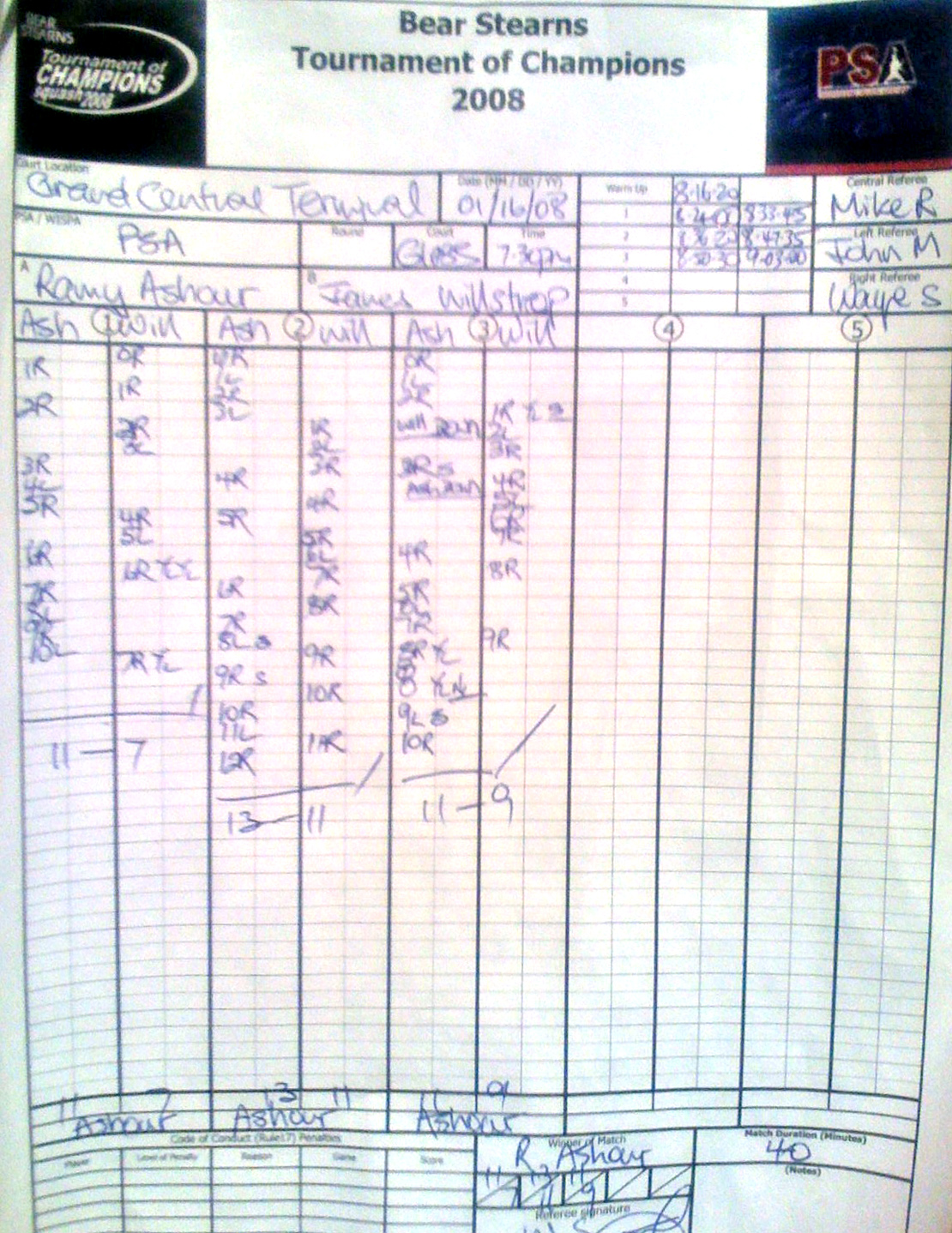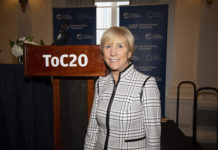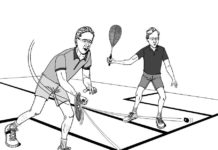International scoring to nine…American scoring to 15…to 11? For those unfamiliar with the term “American” with respect to scoring, that would be PAR—Point A Rally.
 It’s an ongoing debate that has taken center stage with the World Squash Federation (WSF) in response to International Olympic Committee members who have suggested that one shortcoming of squash is that the scoring system is “confusing” and “inconsistent” across different levels.
It’s an ongoing debate that has taken center stage with the World Squash Federation (WSF) in response to International Olympic Committee members who have suggested that one shortcoming of squash is that the scoring system is “confusing” and “inconsistent” across different levels.
So the WSF has launched a feasibility study for developing a unified scoring system—namely, PAR to 11 points that was adopted by the men’s Professional Squash Association in 2004. An additional difference in the PSA scoring system is that at 10-all, the game continues until a player is “clear by two points.”
The primary reasons given at the time PSA made the change were that matches would be shorter (thereby making it easier for promoters to stay on schedule), there would be more urgency throughout the game for an opponent to stay close if the other player gains momentum (because the ultimate goal of 11 points is not far away) and the players would play more of an attacking style from the start (again because 11 points is not far to go compared to the previous standard of 15).
As of late April, the WSF has gathered feedback from a “Working Group” (formed in 2007) tasked with studying the possible change to the rules of squash. Several countries, including Australia, South Africa, England, Estonia, Peru, Finland and Brazil have participated and have expressed positive reactions.
The results from more than 2,000 participants who registered their opinions include:
- Matches were around 30% shorter than with standard scoring to 9 points
- It was not more difficult to keep track of the score
- Players were less tired after the match
- Tactics used were no different (except in Estonia and Brazil where they attacked more)
- The majority would find PAR to 11 more interesting to watch.
Testing of the scoring system was also done at the Dutch National Championships. After comparing the match times in 2008 to 2007, both the men’s and women’s matches were actually slightly longer (by about seven minutes).
The Women’s International Squash Players Association (WISPA) has tested Par-11 in the British and Dutch Nationals as well as in some Challenger events. WISPA will review whether or not it would be in the best interests of women’s professional squash to change to Par-11 at their Board meeting to be held on the last day of the British Open.
In the meantime, the WSF will continue gathering information. If you haven’t tried it, give it a shot and send your feedback to Squash Magazine.





